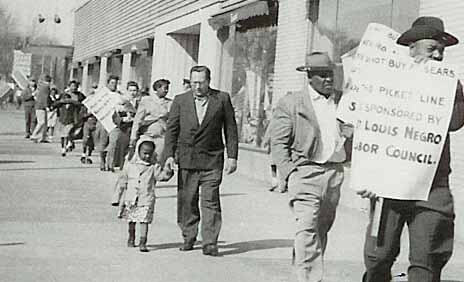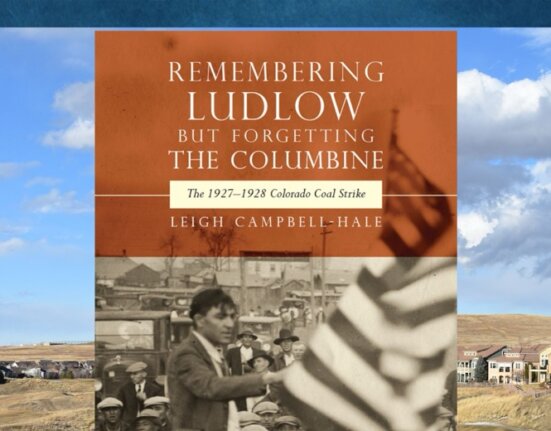It may be clichéd to remark that the 2008 presidential election of Barack Obama, and his historic re-election, were momentous events not only in U.S. history but also in the long march of African American history. Fewer have tackled what Obama’s presence in the Oval Office means for African American history as a subject of inquiry and as a scholarly problem. Since the mid-twentieth century, the field has moved from the margins to the center of the historical profession in the maturation of such themes as gender, class, sexuality, and religion; subfields like black urban and labor history; approaches such as interdisciplinarity, political economy, and the African Diaspora; and greater self-awareness. The Association for the Study of African American Life and History, created by Carter G. Woodson nearly a century ago, remains the premier organization in the field (This year’s theme centers on the 150th anniversary of the Emancipation Proclamation and the fiftieth anniversary of the March on Washington for Jobs and Freedom.) The association’s flagship publication, the Journal of African American (previously Negro) History persists as a foundational artifact of the field and a vibrant scholarly outlet. Beginning in the 1920s as Negro History Week, further, Black History Month has become synonymous with February – and a busy time of the year for practitioners and educators.

Yet, the glare of the second Obama administration spotlights the ongoing challenge of theorization in the field of African American history. How are African Americanists to conceptualize the black experience overall? What are its meanings, characteristics, and trajectories? Is African American history a record of enduring oppression and resistance? Or does the fact of Obama’s presidency demand another historical theory or philosophy altogether? For those of us who teach and write about black social movements, certainly, Obama can be a brainteaser. He conjures the mixed legacies of post-World War II black freedom struggles, which includes the growth of black elected officialdom following the passage of the 1965 Voting Rights Act – though for some Black Freedom Studies scholars it also summons linkages between the president and movement forbearers such as Martin Luther King, Jr., and even El-Hajj Malik El-Shabazz (Malcolm X).
As the federal holiday and D.C. memorial in his honor signify, King has entered the pantheon of Great Americans. More than that, he has become a potent symbol of moral authority surpassing even the influence of U.S. presidents (with the exception of Abraham Lincoln). Does King’s posthumous transformation into a civic saint, and Obama’s electoral ascendance, confirm the idea of “American exceptionalism” – the belief that the United States embodies inevitable human progress toward full freedom, citizenship and democracy for all? Has African American history reached its “end,” at least as a seminal chronicle of U.S. racial subordination, and with it the relevance of the field? Viewed through this lens, the King Memorial can be harnessed not only to commemorating the past but also laying it to rest. Obama’s journey to the presidency, further, draws the final curtain on a morality play that began in 1619 with the arrival of the first African laborers in colonial Virginia.
These considerations have urgency for African Americanists and our audiences precisely because Obama’s electoral victories, and the unveiling of the King monument, were the denouement of decades of staggering blows to Black America, including the Reagan-Bush-Clinton “war on drugs,” mass incarceration, mounting levels of joblessness and poverty, a home mortgage crisis that has disproportionately affected people of color and exacerbated the nation’s racial wealth gap, the active erosion of the public social safety net, new forms of voter disfranchisement, and the brutal indifference to black suffering, as signaled by the federal government’s response to the 2005 Hurricane Katrina crisis. Obama’s entrance to the White House has also been part and parcel to an intense period of class polarization, one in which antiwar demonstrators, public employee unionists, and “Occupy” protesters have mobilized in response to economic calamity and growing social inequality, and the predations of finance capital and deregulation.
As I’ve written elsewhere, my own preoccupation as an African American historian has been the growth and development of a fragile “new” black middle class that emerged after the passage of the 1964 Civil Rights and 1965 Voting Rights acts, and the simultaneous expansion of a larger black working poor “underclass” whose poverty and isolation have deepened since the 1970s. Since then, additionally, the growth of African and Caribbean immigrant populations in the United States has further complicated class relations among black people, shifting popular understandings of what it is to be “black” in America in the twenty-first century. The president’s own bi-racial background and African parentage suggest the changing demographics among black people in United States since the Immigration and Nationality Act of 1965, and the 1967 Supreme Court ruling, Loving v. Virginia, outlawing state prohibitions against interracial marriage.

Similar to other revisionist historians of class politics, social movements and the black community, my approach has been to rethink master narratives of the civil rights movement as a way of reframing African American social history more broadly. From this standpoint, the goal is not simply to de-center Great Persons and Events in the pantheon of African American history, but also critically reappraise them. The Montgomery Bus Boycott of 1955-56, for instance, becomes more than the work of black middle-class clergy represented by a young Martin Luther King, Jr. The grievances of domestic workers in sparking the protest (and their role in piloting the boycott alongside middle-class black women) become pivotal, since black working-class women rode the city buses more than any other segment of the citizenry. The black janitors and laborers who packed the church meetings and voted to continue the boycott, despite white harassment and violence, also move to the foreground as historical actors. Likewise, the role of the all-black Brotherhood of Sleeping Car Porters union in organizing the boycott (through the local leadership of E.D. Nixon) contrasts with the ambivalence of local black clergy, who had to be mobilized by their congregants to participate. It was precisely because King was a relatively inexperienced pastor new to Montgomery, and unlike many other black ministers had not been absorbed into networks of white elite racial paternalism, that he was drafted as president of the newly formed Montgomery Improvement Association. Conversely, as scholars like Jeanne Theoharis have noted, Rosa Parks’ muted, largely symbolic role in the boycott suppressed her background as a seasoned and committed activist in her own right.
These internal dissonances of the Montgomery struggle are familiar to most African American specialists, but the work of presenting these complexities to mass audiences continues. A standard narrative of uncomplicated black unity still endures among those who romanticize the Jim Crow era as a golden age of African American communal harmony and purpose. The larger point is that the explanatory power of African American history has rested on contestation as well as solidarity, fragmentation as well as accord, among black people. African American social movement history is instructive today precisely because many people across racial lines mistook Obama’s 2008 electoral campaign for an actual movement, and projected onto it their desires for a new popular crusade for progressive social change. And in confusing the symbolic trappings of a movement for the real thing, a hagiography has emerged, placing the President outside the boundaries of legitimate criticism. Among African Americans, this stems from a profound measure of pride in Obama as a symbol of black accomplishment, an understanding that he inherited fiscal problems long in the making, and the outrage at the viciously naked racism that has characterized right-wing opposition and incivility toward his administration.
But canonizing him can have dangerous consequences, especially for black publics. For example, Obama’s 2008 election was greeted with the pronouncement (most notably by Black Enterprise publisher Earl G. Graves, Sr.) that black youth had “no more excuses” for lagging in educational attainment and other measures of success. Such declarations did more than buttress popular blame-the-victim rhetoric: Graves used the new president as a totem of black middle-class triumphalism to instruct the black working-class poor in the ways of personal responsibility and uplift. Masquerading as racial consensus, the scolding had the added impact of abolishing conflict from African American history. It complemented the recent publication of Ellis Cose’s book, The End of Anger, which – in a dramatic departure from his earlier work, Rage of a Privileged Class – found that middle-class African Americans were idealistic about the future. A similar celebratory tone characterizes Who’s Afraid of Post-Blackness?: What It Means to be Black Now, written by the cultural essayist Touré. In arguing against static, coercive modes of “authentic” blackness, the book presumes to liberate its audience from a previously narrow, one-sided African American identity. Obama here becomes the touchstone not for black middle-class stewardship or the uplift motto of “lifting as we climb,” but rather for a self-absorbed, individualistic black bourgeois identity. This, at the same moment when the African American middle class has been buried in the rubble of the home mortgage collapse and the wrecking of public sector employment.

A more compelling perspective comes from scholars like Michael C. Dawson (Not in Our Lifetimes: The Future of Black Politics) and Frederick C. Harris (The Price of the Ticket: Barack Obama and the Rise and Decline of Black Politics). Both identify President Obama with a new wave of black elected officials who are further to the right politically of mainstream African American opinion, and whose race-neutral sensibilities undercut issues of significance to black communities. Still, the view of African American history as a narrative of uncomplicated black unity and steady progress persists. This erases, for instance, how King’s allies and supporters pushed and pulled him in more transformative directions than he was willing, on his own, to go. By analogy, this reinforces the necessity of spurring President Obama to do more than manage fiscal austerity, militarism, and the surveillance of political dissidents more “benevolently” than his counterparts on the reactionary right. It falls to African American historians, among others, to articulate more nuanced approaches to black history and related theories of leadership and social change. This moves the conversation beyond just reciting exceptional names, dates, events, and black “firsts.” It instead elevates African American history as a platform for a critical, deliberative and participatory public in the here and now.







